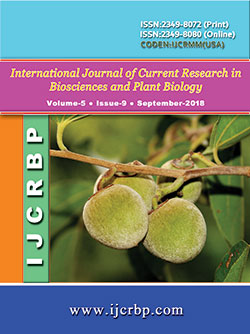 |
Online ISSN : 2349-8080 Issues : 12 per year Publisher : Excellent Publishers Email : editorinchiefijcrbp@gmail.com |
University of Yaoundé I, BP: 812 Yaounde-Cameroon
2Department of Biology, Faculty of Science, University of Maroua, Cameroon
3Department of Microbiology, Faculty of Science, University of Yaounde I, BP: 812 Yaounde-Cameroon
4Department of Biochemistry, Laboratory of Phytoprotection and Plant Valorization Ressource; Biotechnology Center, University of Yaounde I, PO Box 3851 Messa-Yaounde-Cameroon
This work aims to evaluate the role of 24-epibrassinolide (EBR) on the growth and resistance of two maize varieties CMS 90-15 and CMS85-01 to helminthosporiosis in natural conditions. The experimental device is a completely randomized factorial split-plot consisting of five treatments and two varieties repeated three times each. The present study was carried out during two successive seasons of 2015 and 2016 and all data are the meaning of these seasons. The agro-morphological, epidemiological and production parameters of the maize plants were evaluated under the application of the treatments used. The main results show a significant effect of EBR on plant growth, yield, disease resistance, synthesis of secondary metabolites and defense proteins (p<0.05). The EBR significantly reduced grain losses, promoting a gain of about 1.5 t/ha compared to the control and NPK treatments with 1 t/ha for the two varieties studied. Its action greatly reduced the severity with a technical efficiency of 42.3 % for the variety CMS 90-15 and 37.3% for the variety CMS 85-01. It also induced resistance of plants to helminthosporiosis, synthesis of secondary metabolites and defense proteins. These results show that 24-epibrassinolide could be used in the control of helminthosporiosis in cultivated plants.
